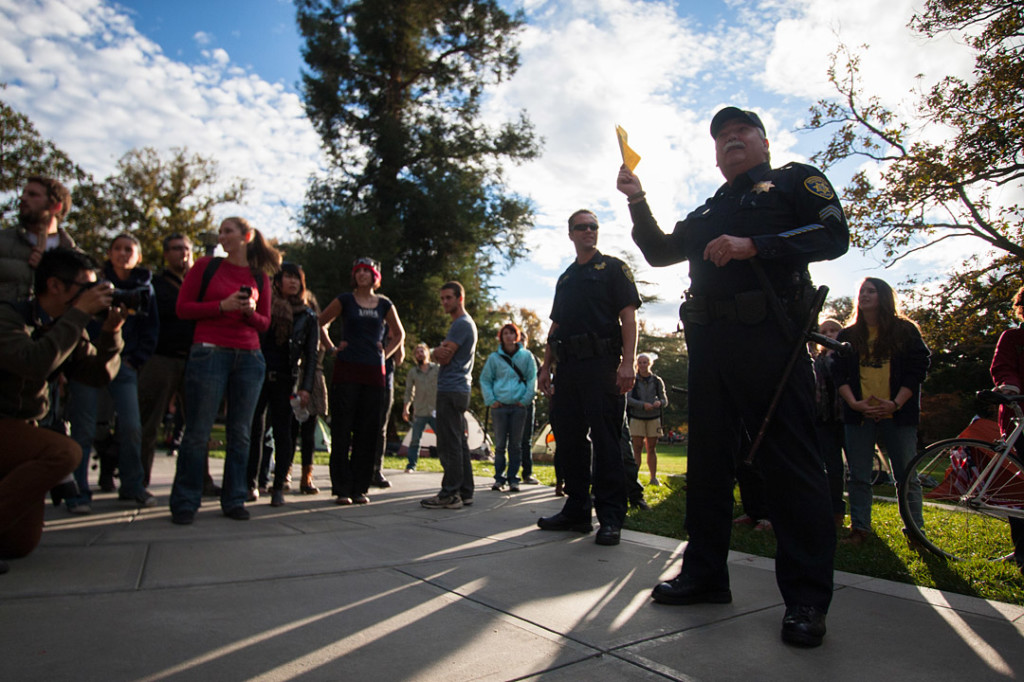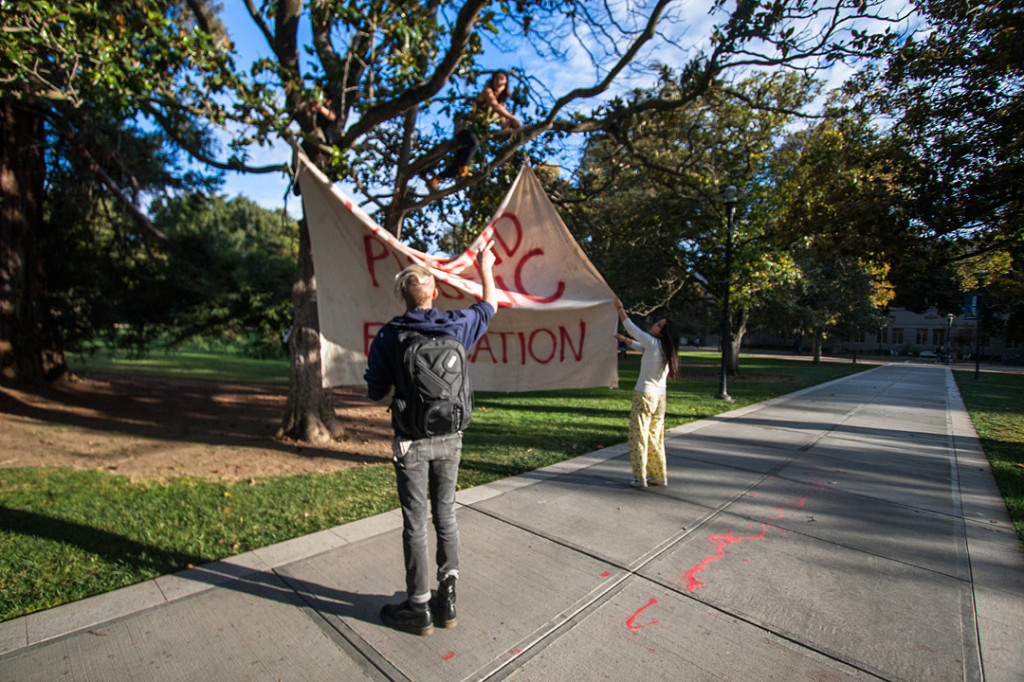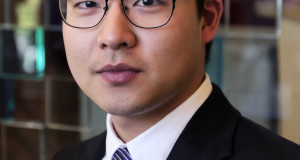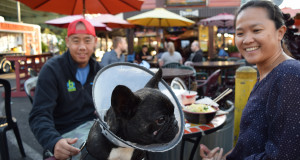It was my first quarter at UC Davis. I was 18, wide-eyed and still a little too excited for college. My first day on campus I ran over to the dingy basement where my campus newspaper’s office was and applied to be a photographer.
They hired me. I thought being a photojournalist was exciting. You get into cool events, you meet famous people, and you’re paid to go. I wanted to live that life.
Early on, I shot football games, new business openings and professor portraits for the California Aggie.
Then two months in, I got a text from a source in Occupy UC Davis during my Chem 2A final.
“Police coming. Come to support pls,” the text said.
The minute I saw that text, I knew I had to go. I knew that someone had to be there to document what was about to happen. I quickly scribbled some answers to my final (I failed it) and ran out to the scene.
I arrived at the Occupy UC Davis encampment on the quad. The protesters were debating their next move. Some wanted to strategically retreat. Others believed they should stand their ground.
Whose quad? Our quad! The police have no right to stop us!
Then the police moved in. The students quickly dragged tents away — they decided to make a symbolic stand with just a few tents. As the police marched in, visors down, batons out and clad in all black riot gear, the situation quickly devolved.
The police began to arrest people arbitrarily. Some thought they were arresting people of color while white students were left untouched. They brought the students to the center of the quad as they waited for cars to take away students whose wrists were bound by zip ties.
Classes were just getting out and more students poured in as they heard the commotion. The police quickly found themselves outnumbered and surrounded. Students yelled at the police to release the students, but no one could hear anything over the chaotic din.
The police panicked.
Lt. John Pike stepped over the students, raised his can of unlicensed and unapproved pepper spray for the crowd to see.
Close your eyes! Cover your face!
Students began to scream as Pike began to spray protesters as if he were a gardener killing weeds. I raised my camera to my eye and held down the shutter.
Click-click-click-click-click-click-click-click.
“How could you do this? You monsters! You monsters, how could you do this to us?” a woman screamed, sobbing as she watched the systematic violence unfold.
Pike continued spraying.
I immediately sprinted to the newsroom and, with my editor, looked through the photos. And the enormity of the situation hit me.
An act of police brutality had just happened on our campus, in this quiet town of Davis. In the moment, we didn’t realize such a hyper-local event was going to be such a historic moment in a national movement.
We composed. We checked our exposure. We took photos.
I posted a set of photos to Flickr and spent the rest of that night emailing every photo editor and director I could find to let them know what happened.
The next morning, I saw that national correspondent James Fallows blogged about it in the Atlantic:
Less than two months ago, it seemed shocking when one NYPD officer cavalierly walked up to a group of female protesters and pepper-sprayed them in the eyes. The UC Davis pepper-sprayer doesn’t slink away, as his NYPD counterpart did, but in every other way this is more coldly brutal. And by the way, when did we accept the idea that local police forces would always dress up in riot gear that used to be associated with storm troopers and dystopian sci-fi movies?
I e-mailed him the link to my Flickr set before heading back out to take more photos. And for several weeks after, I went out and documented the unfolding situation.
I had no idea how far my photos would reach and I still have a hard time grasping it today. Seeing my photo featured in The Atlantic’s yearly round up and having articles written about me was unexpected. Having them picked up by Reuters and circulated globally at the age of 18 was surreal. Knowing photographers I’ve looked up to for years – Alan Chin and Michael Yamashita, for instance – have seen my work had me floored.
I was just doing my job.
It was in that moment that my resolve to become a photojournalist was cemented. I knew the job wasn’t about glamor or free tickets. In that one second — in those 8.5 frames — I finally understood the purpose of photojournalism and its power.
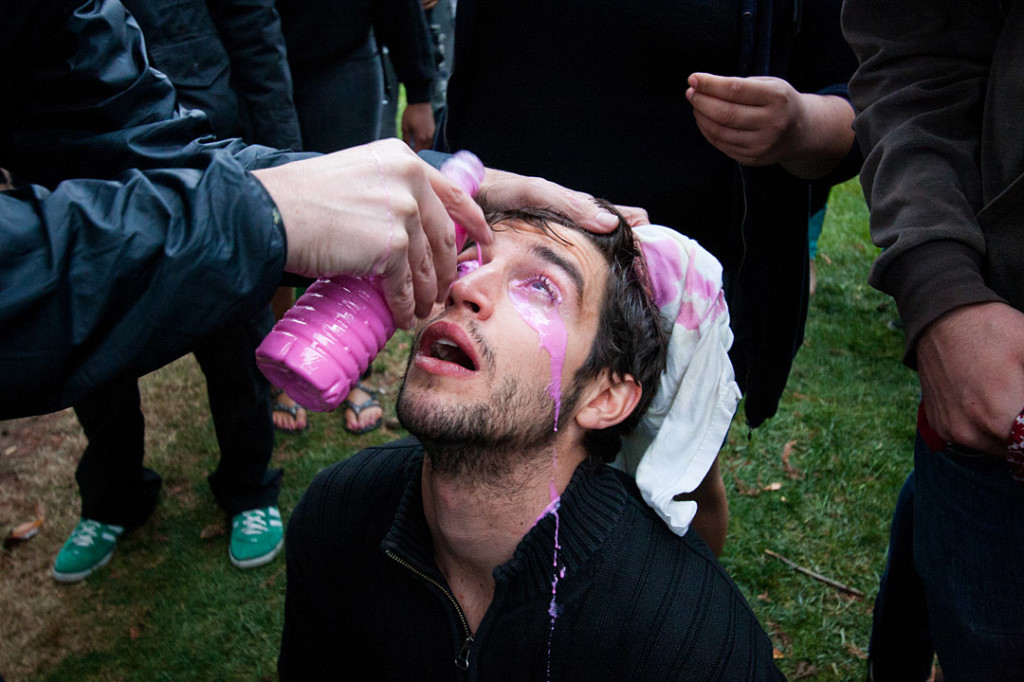
Students treat a protester with who was pepper sprayed with a mixture of Maalox and water on November 18, 2011 Davis, Calif. Lt. John Pike attained international infamy after he pepper sprayed a group of students who were sitting down with their arms linked. (BRIAN NGUYEN/THE CALIFORNIA AGGIE)
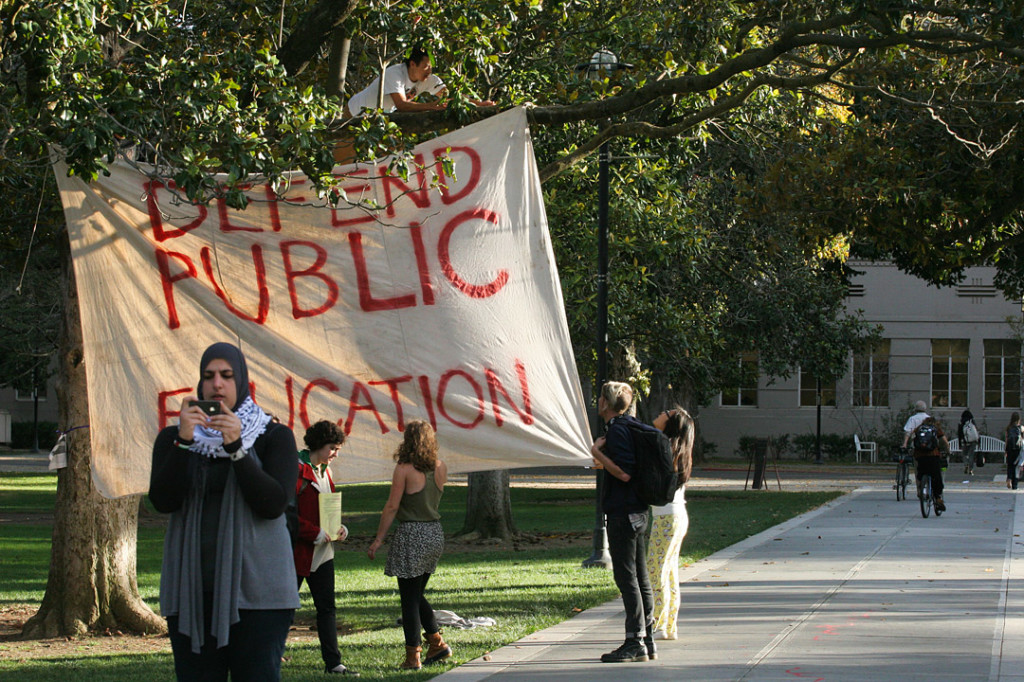
Students hang up a sign on November 18, 2011 Davis, Calif. Shortly after, Lt. John Pike pepper sprayed the line of students (BRIAN NGUYEN/THE CALIFORNIA AGGIE)
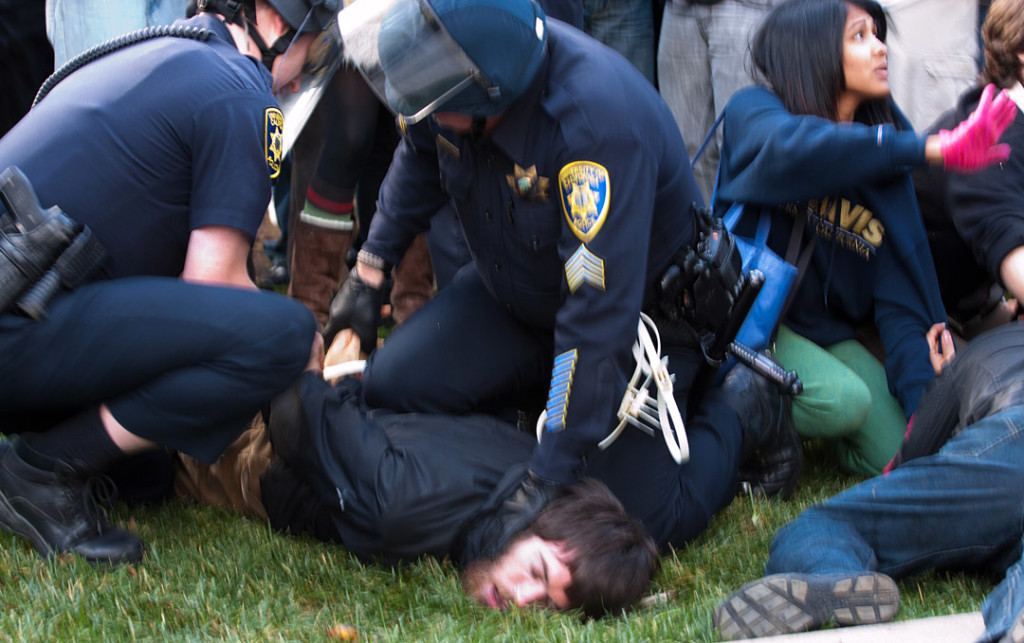
UC Davis police officers arrest a student during the raid on the Occupy UC Davis encampment on November 18, 2011 Davis, Calif. Shortly after, Lt. John Pike pepper sprayed the line of students (BRIAN NGUYEN/THE CALIFORNIA AGGIE)
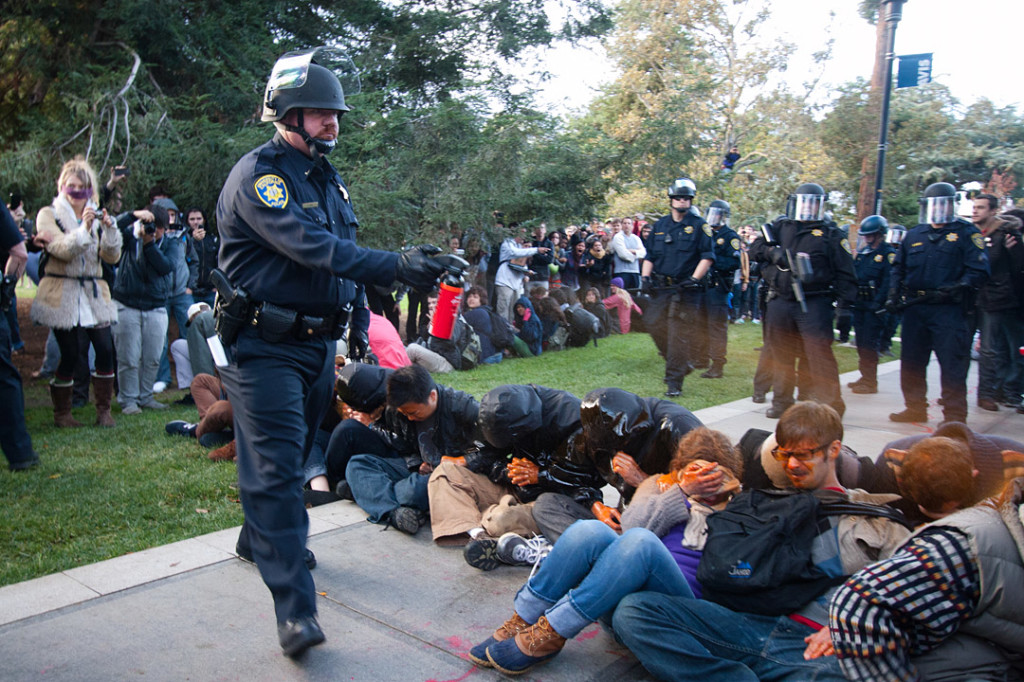
Lt. John Pike pepper sprays the line of students on November 18, 2011 Davis, Calif. Pike was fired after an investigation conducted by the Reynoso Task Force found him responsible for the actions on that led to the spraying. (BRIAN NGUYEN/THE CALIFORNIA AGGIE)
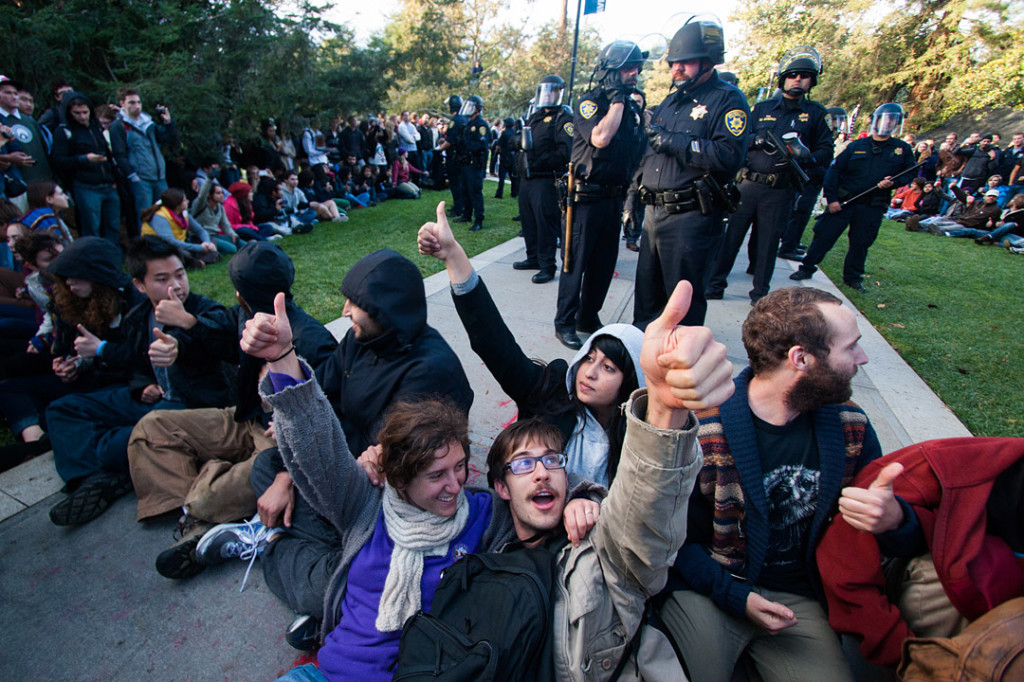
Students hold an impromptu general assembly during the police raid on the Occupy UC Davis encampment, voting the police off the quad on November 18, 2011 Davis, Calif. Shortly after, Lt. John Pike pepper sprayed the line of students (BRIAN NGUYEN/THE CALIFORNIA AGGIE)
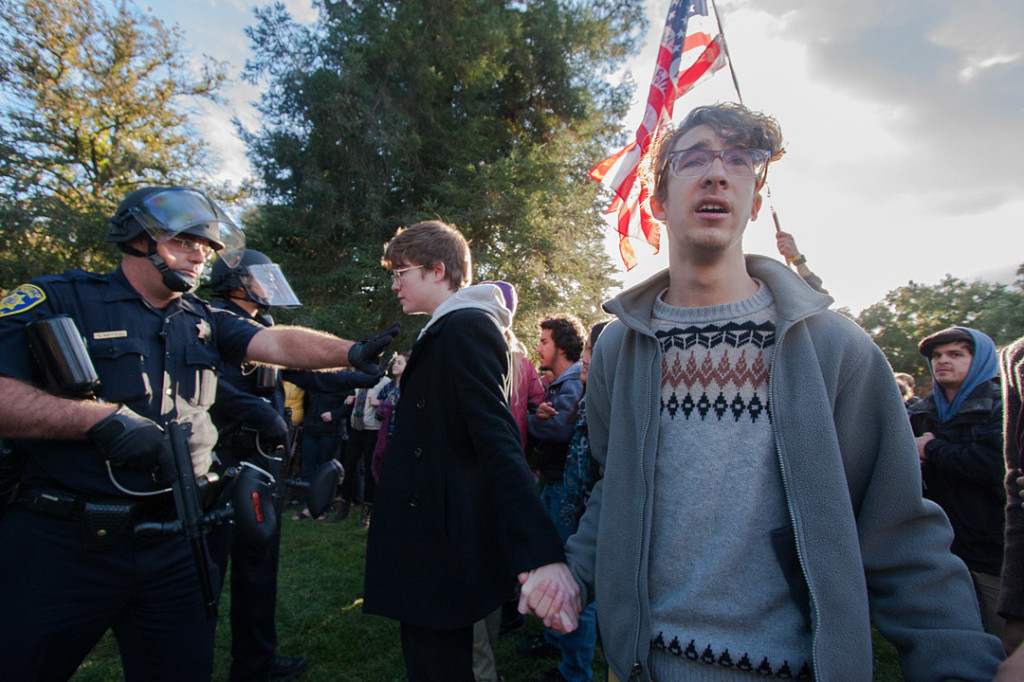
Students form a human chain around their tents to protest the police action on November 18, 2011 Davis, Calif. The situation escalated after students surrounded the police, leading to Lt. John Pike pepper spraying a line of seated students. (BRIAN NGUYEN/THE CALIFORNIA AGGIE)
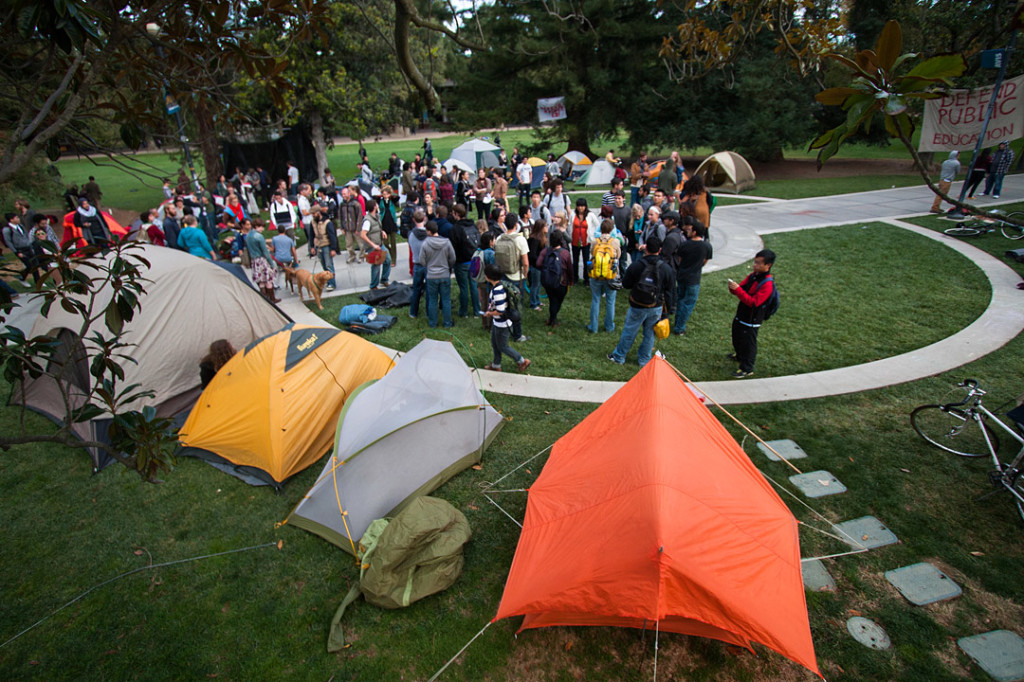
Students gather on the quad to discuss their plan of action on November 18, 2011 Davis, Calif. Police moved in shortly to remove the Occupy UC Davis encampment. (BRIAN NGUYEN/THE CALIFORNIA AGGIE)
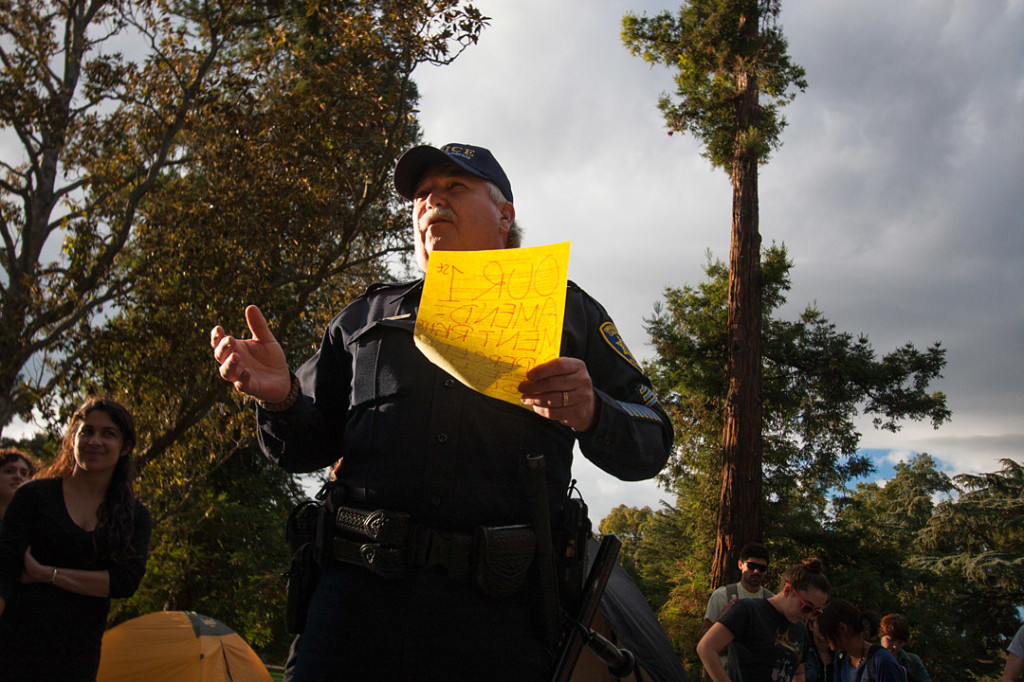
Officer Raymond Sutera presents the UC Davis policy against overnight camping to the Occupy UC Davis general assembly on November 18, 2011 Davis, Calif. (BRIAN NGUYEN/THE CALIFORNIA AGGIE)
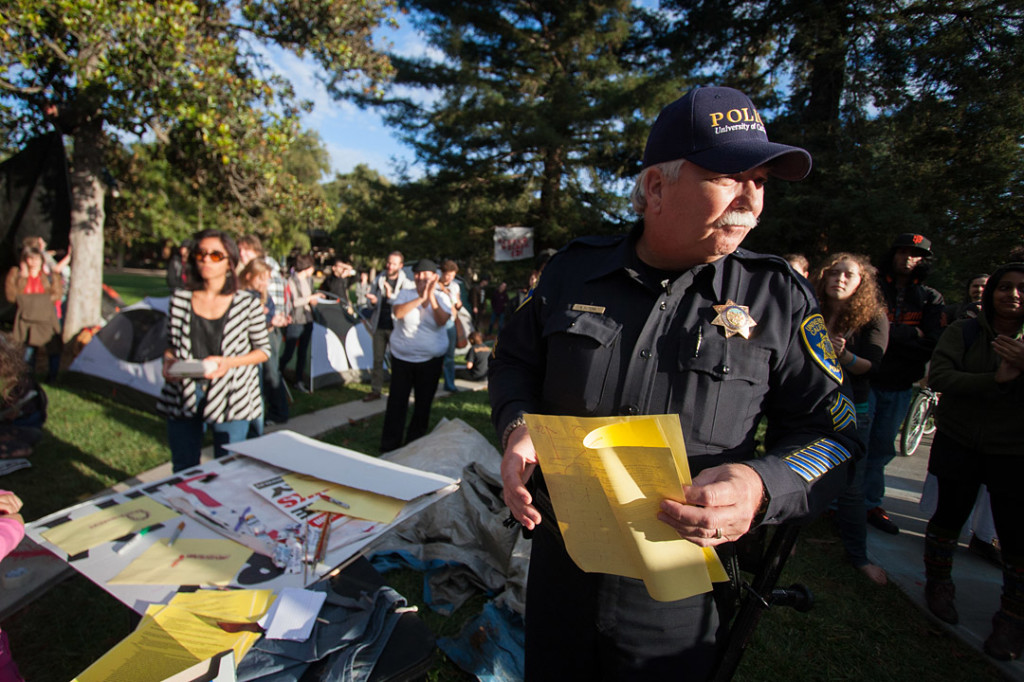
Officer Raymond Sutera presents the UC Davis policy against overnight camping to the Occupy UC Davis general assembly on November 18, 2011 Davis, Calif. (BRIAN NGUYEN/THE CALIFORNIA AGGIE)
 VOICES Publishing from the AAJA National Convention
VOICES Publishing from the AAJA National Convention


